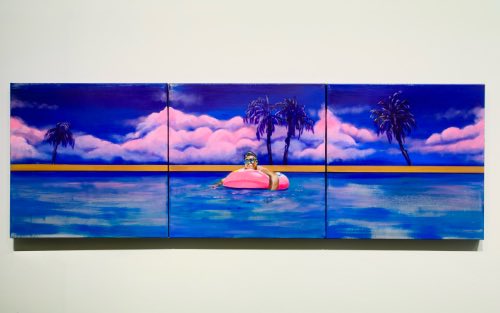INTRODUCTION
The traces of our lives are made up of memories that connect us to the source.
“[W]Here Now” reflects on the role of water as a conduit to the essence of our lives. This water constantly flows to map the pathways of our identities and remind us that we all come from somewhere.
Water is a vessel and connection to the source of all life that carries our stories, histories, and power. But where do we go to remember? And how do we know the importance of the importance of things we are re-membering? Because not all memories come from us, but a collective and generational pool of experience.
Our exhibition space becomes this site of memory where we conjure up what is already in us to better understand our place in the world.
Like Toni Morrison puts it –– all water has perfect memory and etched within us all are rivers, lakes, and seas that are trying to get back where they were – The source.
Just like water our artists are mapping out and activating different memories through creating. Neither time nor centuries of oppression have been, and can erase Africans’ true heritage. We’ll always find a way.
DATES: 11 - 17 June OPEN DAILY: 10 - 6PM
“[W]Here Now” reflects on the role of water as a conduit to the essence of our lives. This water constantly flows to map the pathways of our identities and remind us that we all come from somewhere.
Water is a vessel and connection to the source of all life that carries our stories, histories, and power. But where do we go to remember? And how do we know the importance of the importance of things we are re-membering? Because not all memories come from us, but a collective and generational pool of experience.
Our exhibition space becomes this site of memory where we conjure up what is already in us to better understand our place in the world.
Like Toni Morrison puts it –– all water has perfect memory and etched within us all are rivers, lakes, and seas that are trying to get back where they were – The source.
Just like water our artists are mapping out and activating different memories through creating. Neither time nor centuries of oppression have been, and can erase Africans’ true heritage. We’ll always find a way.
DATES: 11 - 17 June OPEN DAILY: 10 - 6PM

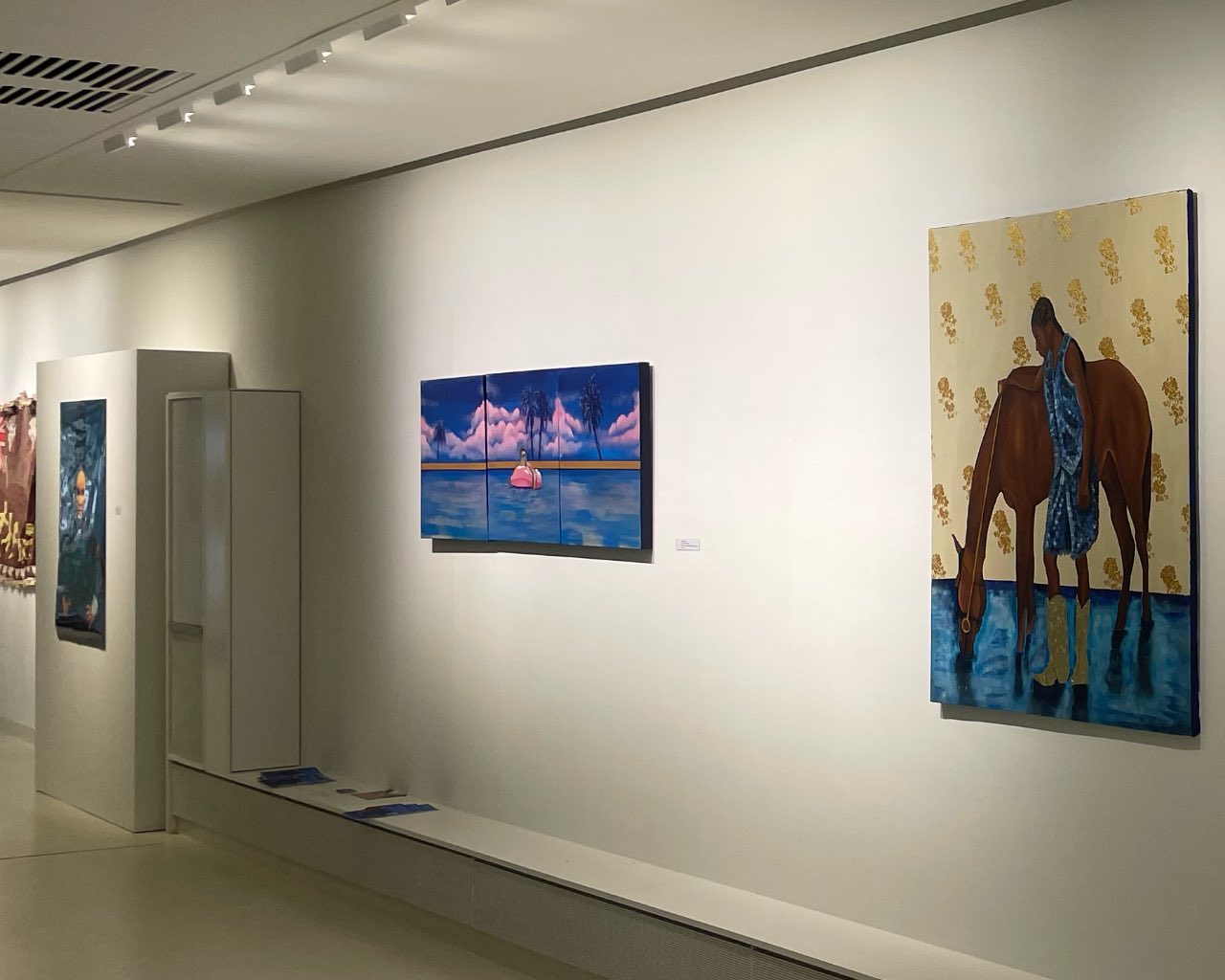
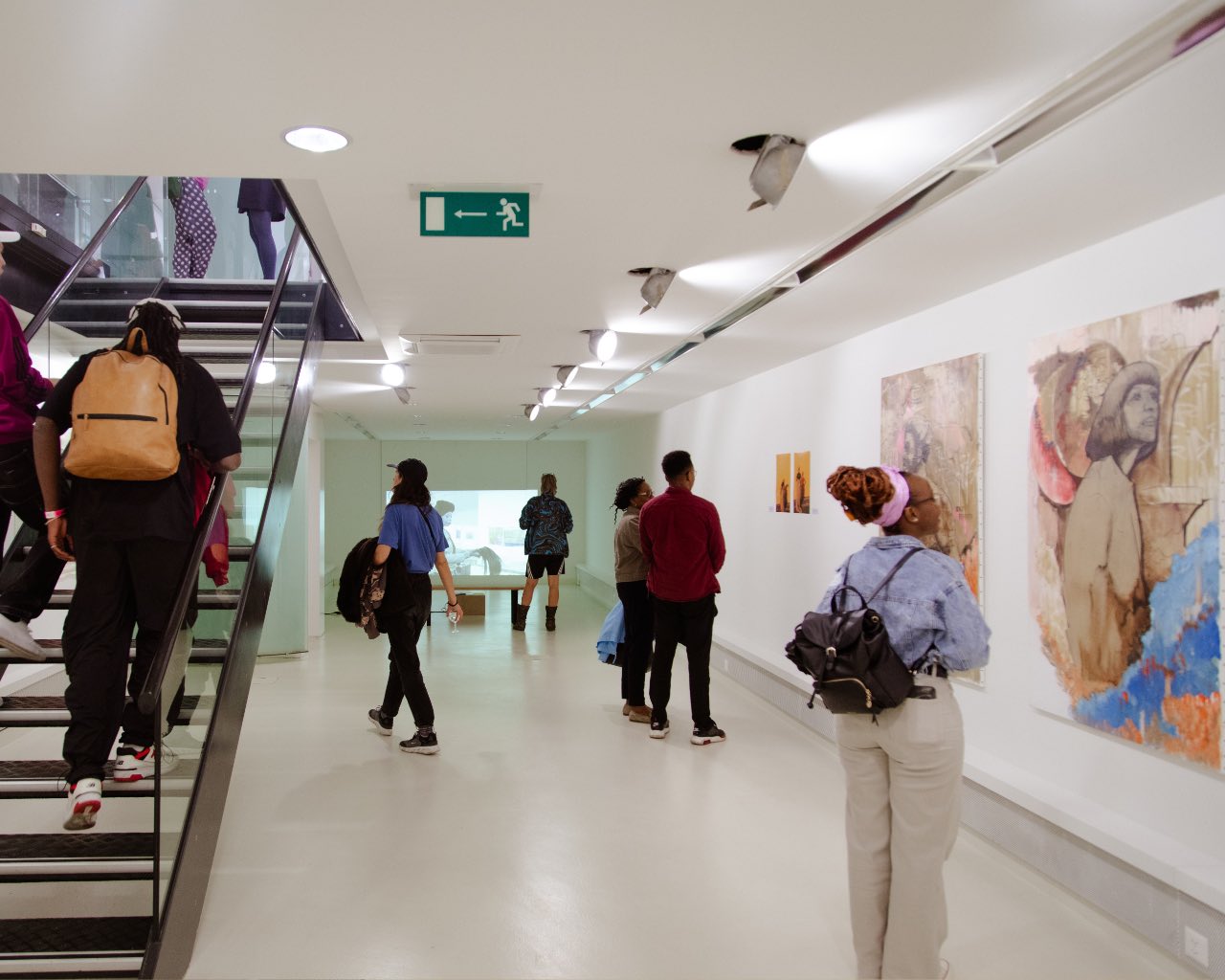

BENJAMIN SENCHEREY
Benjamin Sencherey’s art fuses the rich tapestry of Ghanaian culture with the timeless allure of Renaissance imagery, emboldened by the luminous elegance of gold leaf, inviting viewers on a journey through history, tradition, and the eternal pursuit of beauty.
As an artist, educator, and architect, Sencherey’s embodies a spirit of creative exploration and cultural exchange. His artistic practice seeks to push boundaries by depicting the gory of the black body through his reference of the cultural movement.
Sencherey considers himself a dynamic and innovative contemporary visual artist occupied with painting and photography. He examines complex transitions from image to artwork, discussing concepts of ownership and authorship and the aura of an image as an artwork; with this process, I am able to discuss topics and dive into a realm of black culture.
As an artist, educator, and architect, Sencherey’s embodies a spirit of creative exploration and cultural exchange. His artistic practice seeks to push boundaries by depicting the gory of the black body through his reference of the cultural movement.
Sencherey considers himself a dynamic and innovative contemporary visual artist occupied with painting and photography. He examines complex transitions from image to artwork, discussing concepts of ownership and authorship and the aura of an image as an artwork; with this process, I am able to discuss topics and dive into a realm of black culture.
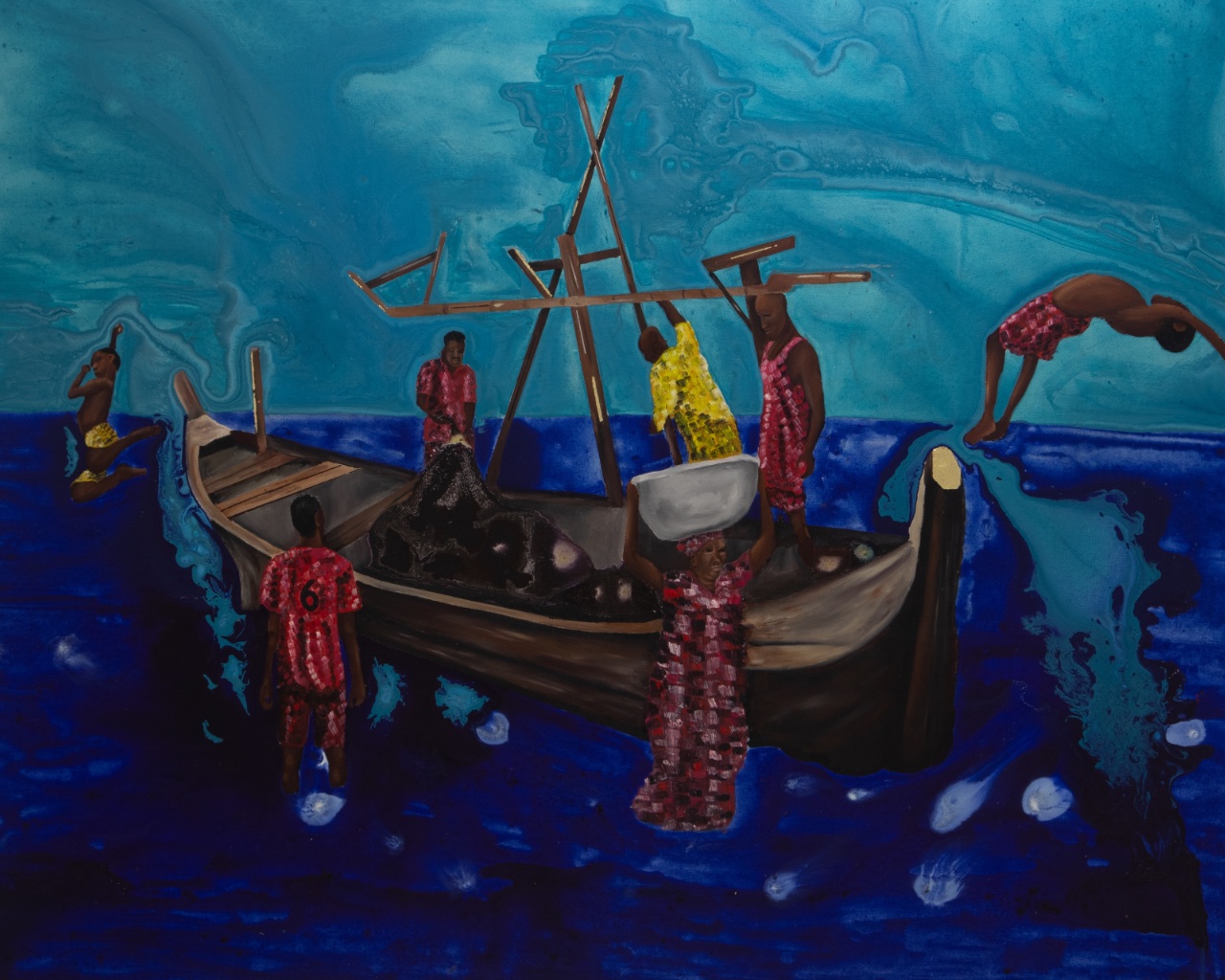

CINTHIA SIFA MULANGA
The core focus of Mulanga's art is to challenge the representation of Black female subjects by investigating the individual's relationship with space. Space works on multiple levels in Mulanga's artworks; on the one hand, it represents the space itself. On the other, it is symbolic as an extension of the individual. The space embodies the human, morphing into an independent protagonist. As is the case with different facets of the human soul, these multi-spaces exist in one moment, inviting one to reflect and interact with them if and when they are ready. It is in these liminal moments that Cinthia Sifa Mulanga highlights the nuances and complexities of a Black woman's identity in today's world.
Mulanga developed a fascination with the radical self-acceptance and self-confidence that Black women exude despite the systems of white patriarchy that bear down heavily on the conditions set for Black women in accruing visibility, success, and confidence. As such, her paintings also operate as multi-perspectival portraits.
Mulanga developed a fascination with the radical self-acceptance and self-confidence that Black women exude despite the systems of white patriarchy that bear down heavily on the conditions set for Black women in accruing visibility, success, and confidence. As such, her paintings also operate as multi-perspectival portraits.

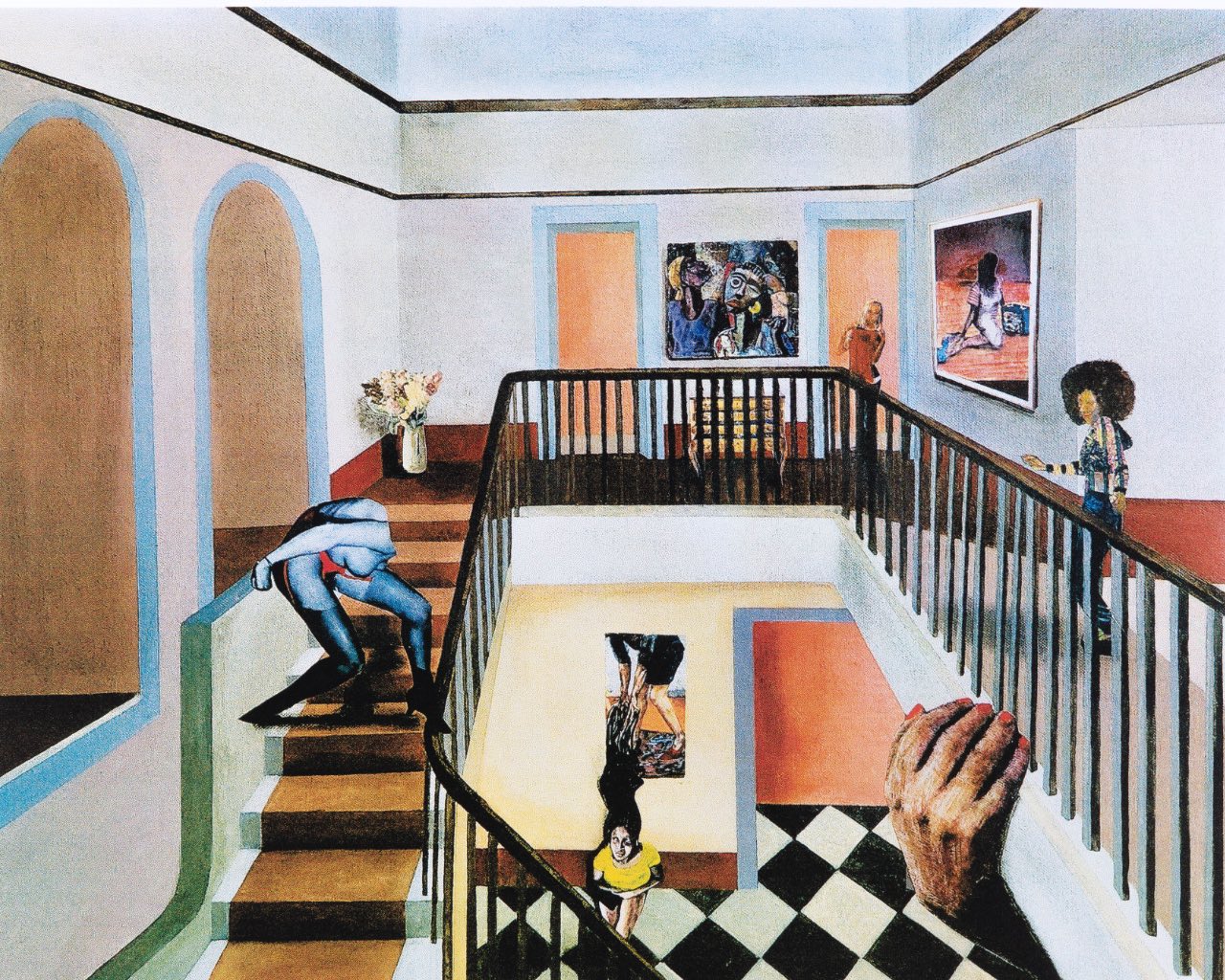
GRANT JURIUS
B.1988. Grant Jurius artistic practice involves field research into his own heritage and study of the land that he stems from in Elsies River, Cape Town.
His practice involve the research of texture, surface, architecture, visual/aural layers, landmarks & monuments of spaces among other studies.
Jurius utilises mediums which include visual & sonic, recording space through the exploration of the senses to engage in the rituals of spaces.
“This approach allows me to observe the value systems placed upon space to contextualize & recontextualize those value systems. I feel that these value systems govern & shape the identity, inhabitants & Psychogeography of that space.”
He observes recordings by walking, smelling, feeling, wall textures, sound, surface. He peels back textual layers while imagining & mythmaking old, ancient, futuristic ideas & visions.
This particular series of paintings were created in Basel, Switzerland while researching these references. The exhibited portraits are of South African born jazz artists Sathima Benjamin, and Makaya Ntshoko who were exiled in Switzerland during the early 1960s due to the political turmoil of Apartheid South Africa.


EVA DE SOUZA
As a Black Swiss woman living in Bern, born and raised in Salvador de Bahia in Brazil, the mediation between cultures and identities characterizes my career.With cultural roots as an Afro-Brazilian and a transnational horizon, I want to use my art to break down borders, promote feelings of connectedness, and encourage dialog between different cultures. I have been living in Switzerland for more than 30 years and am involved in the interface between political art and activism for social justice, anti-racism and feminism.
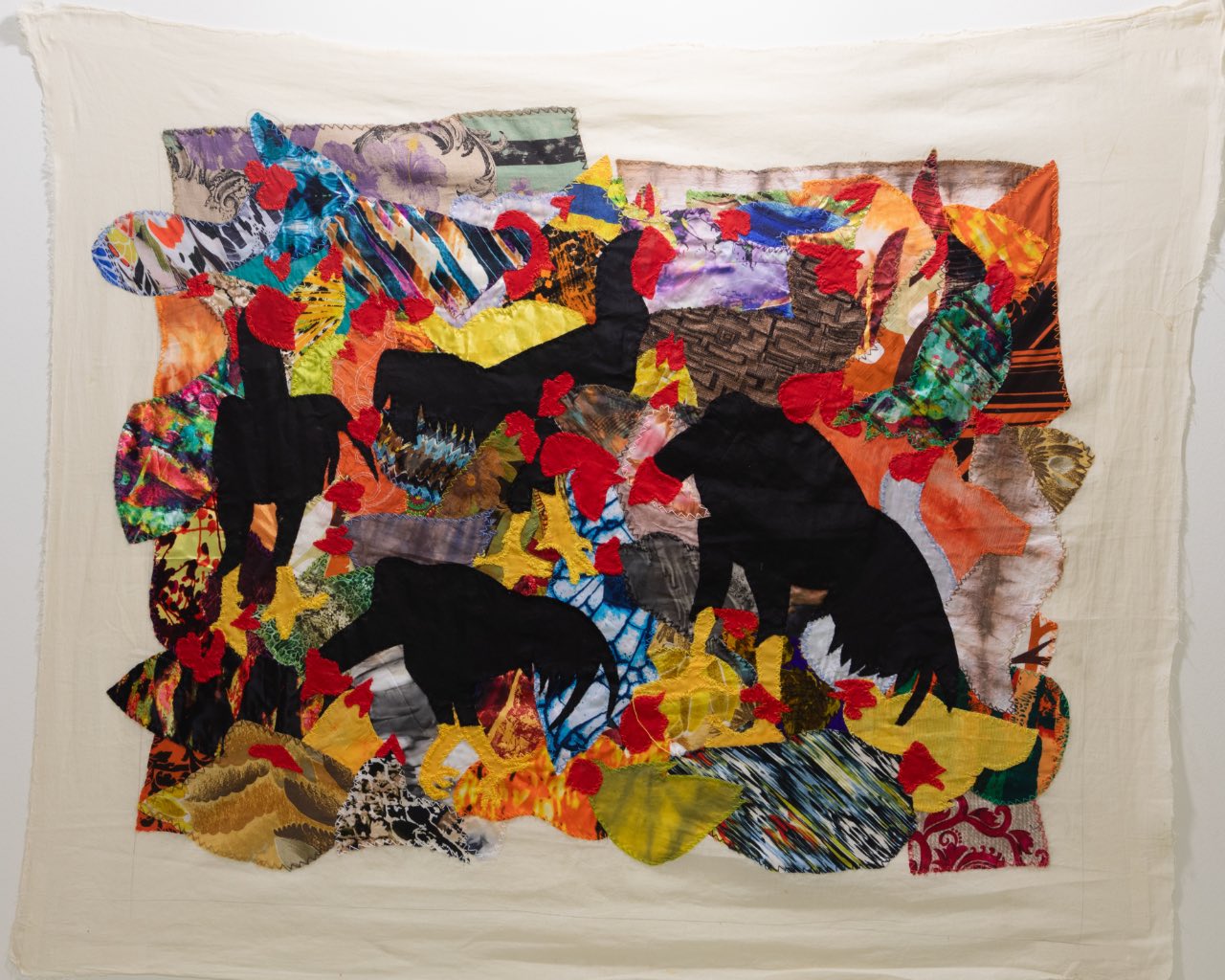

KATLEGO TLABELA
Tlabela has always found himself predominantly concerned in the multi-disciplinary
technical and creative processes of painting, sound, photography and sculptural installations – within each discipline; he finds ways to incorporate elements of print.
Tlabela’s artistic interests have spanned from social and political crises in Post-Apartheid South Africa, the independent African continent as well as the United States of America. Resistance, protest, dialogues around race and positive methods of representation of the Black Body and Experience are visualized through text-based and visual works often revisiting history and relating it back to contemporary events.
The political and personal merges through Tlabela’s work, with pride and defiance.
Since 2020, Tlabela’s practice has solely focused on painting and depicting fictional yet attainable scenes of the Black Elite, often also paying tribute to historically prominent Black artists within his works.

